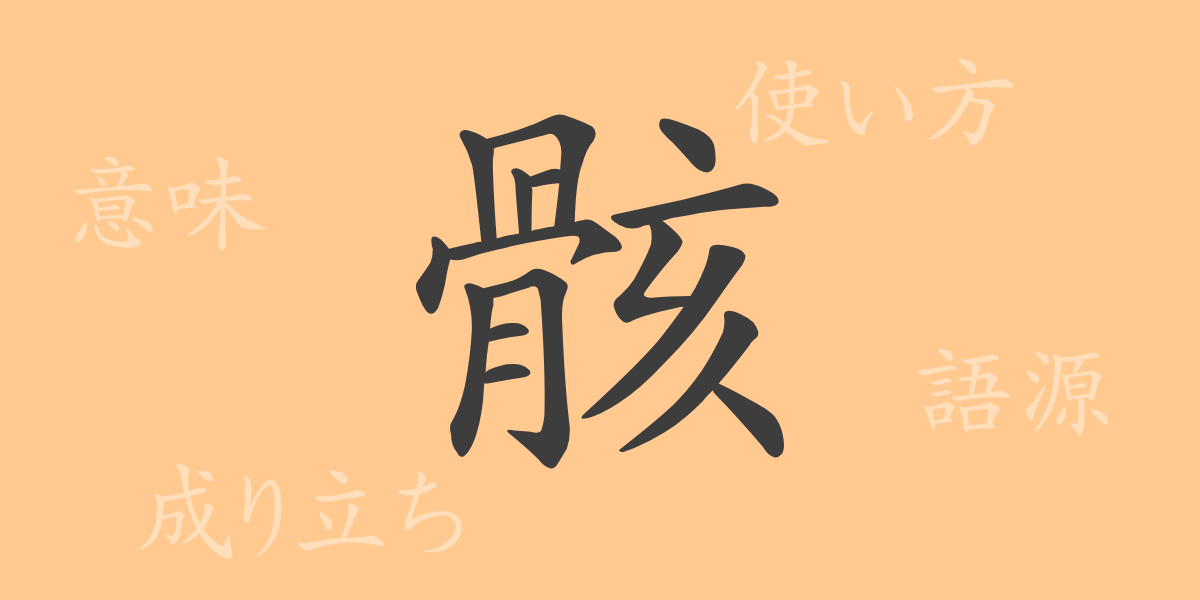Japan’s rich culture is inextricably linked to the essential element of Kanji. Each Kanji character has its unique history and meaning, deeply rooted in the daily lives of the Japanese people. In this article, we will focus on the less commonly known but significant Kanji ‘骸’ (Gaikotsu), exploring everything from its origins to its usage. Let’s dive deep into the world of ‘骸’ (Gaikotsu).
The Origin of ‘骸’ (Gaikotsu)
The Kanji character ‘骸’ (Gaikotsu) finds its origins in ancient China. This character is a combination of the character for ‘bone’ (骨) and ‘impurity’ or ‘filth’ (亥). Originally, ‘骸’ (Gaikotsu) referred to a corpse after death, specifically the bones. Over time, its meaning has expanded to include metaphorical connotations.
The Meaning and Usage of ‘骸’ (Gaikotsu)
In modern Japanese, the Kanji ‘骸’ (Gaikotsu) is primarily used to denote the human body, especially a dead body or skeleton. Depending on the context, it can also carry a derogatory nuance towards the body. Additionally, it is used in a spiritual sense to mean ‘shell’ or ‘husk’. This character is often employed emotively in literature and poetry.
Reading, Stroke Count, and Radical of ‘骸’ (Gaikotsu)
Understanding the reading and structure of the Kanji ‘骸’ (Gaikotsu) is also crucial.
- Reading: The Onyomi reading is ‘がい’ (Gai), and there is no particular Kunyomi reading.
- Stroke Count: It has a total of 17 strokes.
- Radical: The bone radical (骨部, Honebu) is its radical.
Idioms, Phrases, and Proverbs Using ‘骸’ (Gaikotsu) and Their Meanings
There are numerous idioms, phrases, and proverbs that include ‘骸’ (Gaikotsu). Here are a few examples:
- ‘骸骨’ (Gaikotsu): Refers to a skeleton or a body that has been reduced to bones.
- ‘骸靭’ (Gaijin): A word meaning a strong and sturdy skeleton or body.
- ‘骸を晒す’ (Gaikotsu- wo -Sara-su): A phrase that means to leave a dead body exposed to the elements, or to expose one’s shame.
Conclusion on ‘骸’ (Gaikotsu)
The Kanji ‘骸’ (Gaikotsu) is a character with a unique meaning and history. Although it is often associated with death and therefore used in specific contexts, its role in the Japanese language is incredibly important. The ‘骸’ (Gaikotsu) we see in literary works and poetry is key to creating rich emotional expressions. Through this article, we hope you have gained a deeper understanding of the Kanji ‘骸’ (Gaikotsu) and can appreciate the world of nuanced Japanese expressions even more.

























